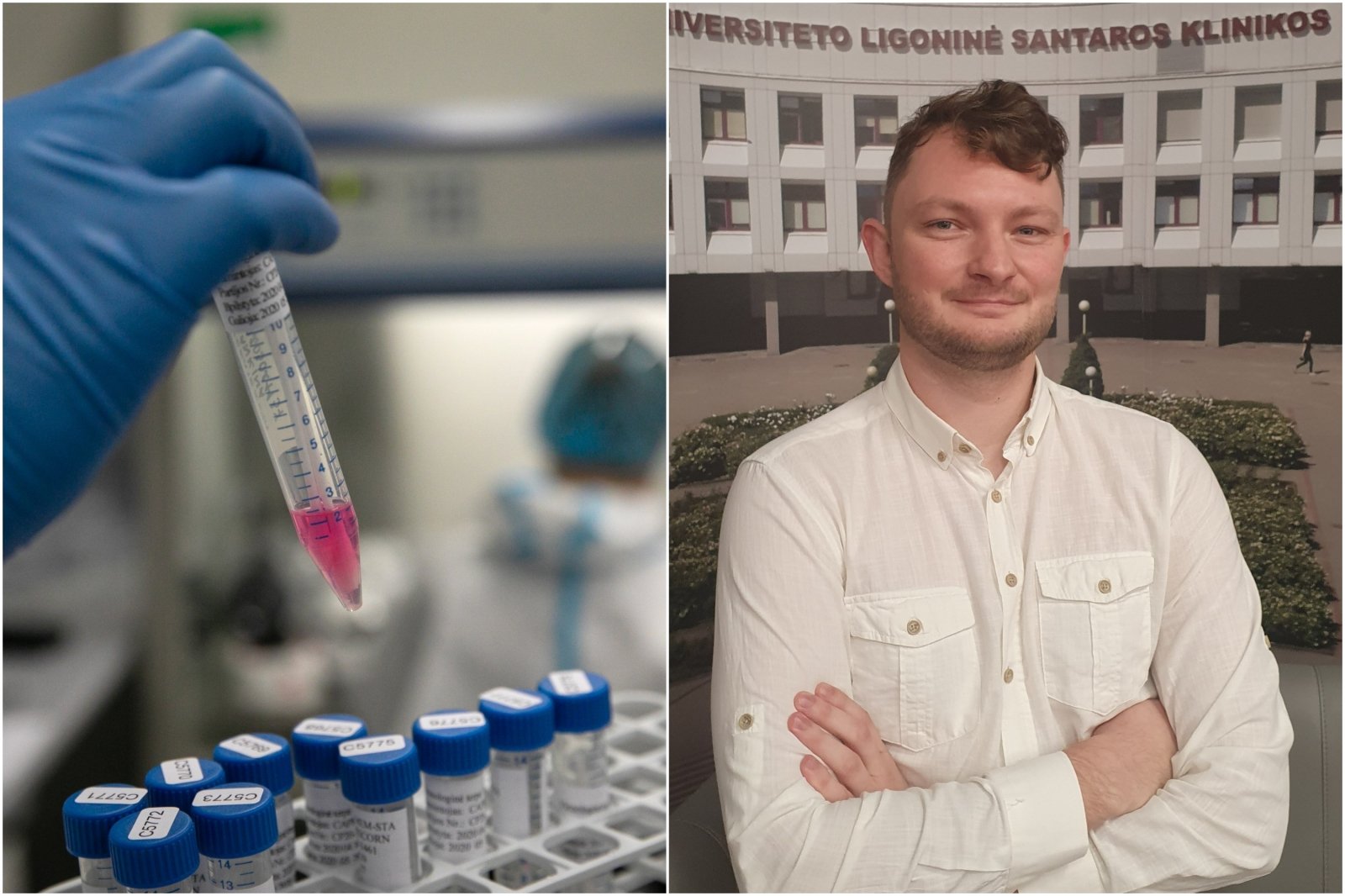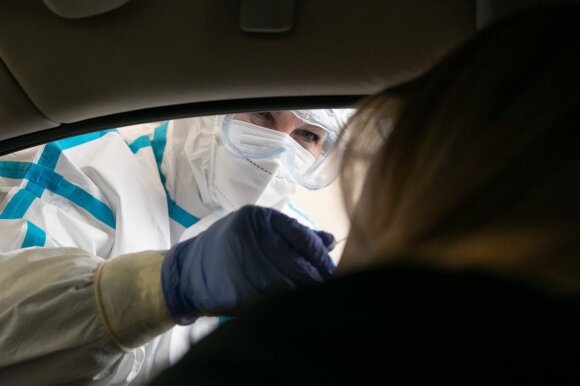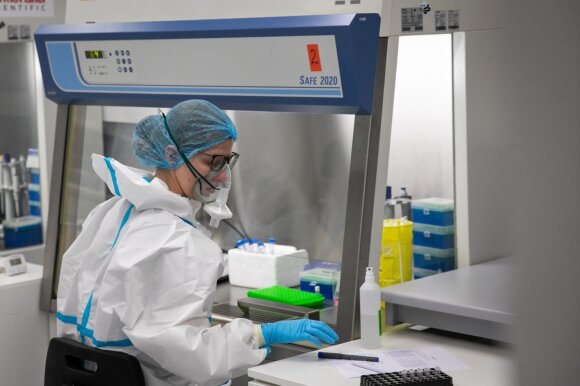– As I understand it, PCR tests only show whether a person has coronavirus or not. And how is it determined what variety it has? Are the tests randomly selected and then sent to other laboratories?
– Yes, rightly, PCR only determines if a person now has a virus – whether he is infected and has COVID-19. But it doesn’t show variety. To identify the strain, you need to look at the genetic information in the virus. This can be done in several ways. It is possible to use the same PCR method, but it is a non-specific, very rarely used method. Sequence studies can also be performed. Sequencing is the scanning of genetic information. Depending on the genetic information, it is possible to see what strain of the virus. In Lithuania, sequencing studies are performed by 4 laboratories, and samples are sent to the European Central Laboratory, where they are also sequenced. In Lithuania, sequencing is performed by Santara Clinics, Vilnius University and Kaunas Clinics of the Lithuanian University of Health Sciences. The whole process is coordinated by the National Public Health Laboratory. It transports samples to laboratories that perform sequencing.
The examination of samples is constantly evolving depending on the epidemiological situation in the country. However, at least 5% shall be selected at random on a daily basis. positive cases from different Lithuanian cities in order to be able to observe in which counties which variety dominates. Because we now want to know as accurately as possible about the prevalence of the omicron strain, all positive cases from abroad are sequenced, as well as cases where very young patients have died from coronavirus. S dropouts are sent to laboratories – when a PCR test detects only 2 genes out of 3. The 3 gene is not due to a mutation in the omicron strain. If you already see an S dropout during the PCR test, it is likely that there will be an omicron strain. Not 100%, but very often it is confirmed.
Daniel Naumovas
© Santara Clinic
–
– How long does such research take?
– The PCR test itself takes about 3 hours, of course it depends on the logistics. The sequence takes about a week. First of all, samples from all over Lithuania have to come to one laboratory, then the so-called libraries are prepared in the laboratory for two days. The machine does, searches for, enters information, needs to analyze a lot of data, put together a virus genome to identify a strain. The process is very long, but not only in Lithuania. By default worldwide, this process is very long and sequential results usually require 2 weeks.
– But even a simple PCR sample already suggests that it is an omicron strain and not a delta or something else?
– Yes correct.
– How many samples are tested for coronavirus strains per day in Lithuania?
– In Lithuania, about 10 thousand PCR tests are usually performed per day, of which about 1,000 are positive. Of this, 1,000 positives account for about 5-10 percent. travels to the sequencing laboratory. As I mentioned, sequencing is a very long process, 4 laboratories, of course, can’t investigate very much. Approximately 2-3 thousand positive cases are sequenced per month.
–
– And is it possible that a person got sick, he underwent a PCR test, but no sequencing was performed, so the person does not know that the omicron strain is actually sick?
– It is always possible, but do not think that omikron is something very impressive or different, we know that in January he will try to push the delta, and by the end of January the delta will probably be pushed out. It is only now that there is a transitional period when we do not fully know how to deal with this variety, which is why there are additional measures.
– Samples for testing are selected at random, which means we don’t know exactly how many omicron cases we have?
– Yes, but it can usually be calculated statistically. If we see that, say, 10 percent. of the positive cases is the omicron variety, it can be said that in Lithuania already 10 percent. all patients with coronavirus have an omicron strain. Again, there are a lot of strains, the coronavirus has more than 1000 of them. You really don’t have to think that if an omicron strain is found, it will be much better or much worse. There is no need to pay too much attention to ordinary people.
–
– It is said that the tests we have, both PCR and rapid, make it more difficult to detect the omicron strain than the other. Is this true or a myth?
– This is a myth. The tests used in Lithuania are appropriate and they accurately detect the disease. The PCR test is generally one of the most accurate molecular tests that can detect infection, not necessarily coronavirus, but another.
– You work in a laboratory with this variety, maybe you already have any observations about the omicron variety, have you noticed anything interesting?
– Currently, not only Lithuanian but also other researchers are conducting a lot of research on this variety. Most data are published on the symptoms and severity of the disease. The fact that the virus spreads much faster and becomes more contagious has already been confirmed and there is nothing to discuss. However, the fact that symptoms are milder and mortality is lower is already confirmed by the first scientific articles and is likely to be the case. It is to be hoped that the virus will not tend to evolve in the wrong direction and will remain less dangerous to us.
– Thank you for conversation.
–
It is strictly forbidden to use the information published by DELFI on other websites, in the media or elsewhere, or to distribute our material in any form without consent, and if consent has been obtained, DELFI must be cited as the source.




